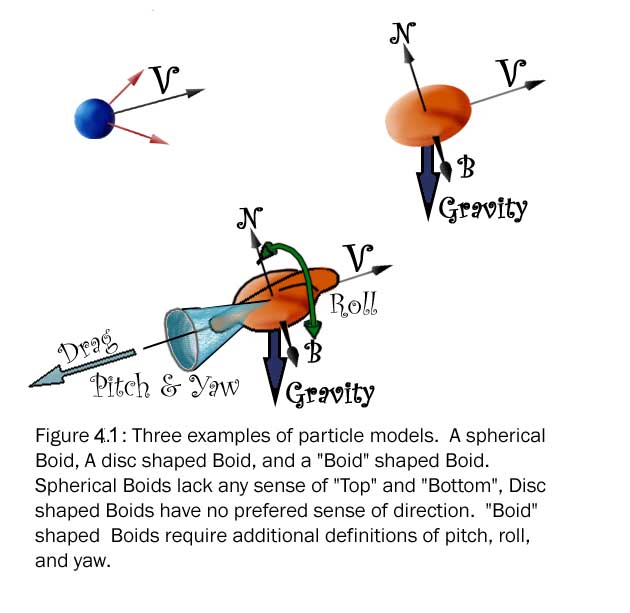
4. Variations on the Boids model

In the case of my simple simulation, each boid is treated as a point with zero mass and as such they are not affected by gravity and no preferred orientation. If one desired, they could spend significantly more time and computing power to model each boid as a flying disk in a gravitational field, or go even further and model each boid as a flight model with lift, drag, mass, limits on pitch, yaw, and roll, and any number of other attributes. Each added factor obviously adds to the complexity of the model, but each addition should bring the simulation closer to real life. I’ve taken the liberty of posting a number of other cellular automata and particle simulations links that one can follow.
References and Interesting Links:
Boids:
http://www.red3d.com/cwr/boids/
An
interesting, but non-interactive 3d version of a Boids model, as well as links
to other Boids related sites plus discussion.
The discussions on autonomous navigation were quite impressive.
Boids Pseudocode
http://www.ca.us.vergenet.net/~conrad/boids/pseudocode.html
Contains discussion of a Boids model, as well as psuedocode for
constructing a model.
Genetically
Engineered Battle Boids
http://www.media.mit.edu/~lifton/proj/Boids/
An
interesting little applet that dabbles in ‘genetic diversity’ of it’s
Boids and tests their fitness.
Artificial Life and Virtual Reality:
Thalmann, Nadia Magnenat & Thalmann, Daniel -- Editors
John Wiley & Sons, New York 1994
A collection of papers written on the study of Artificial Life; very technical and difficult to understand at times.
The Sun Java website, full of useful information about Java and Java applications, as well as a free compiler and java developers kit used to program my simulation.